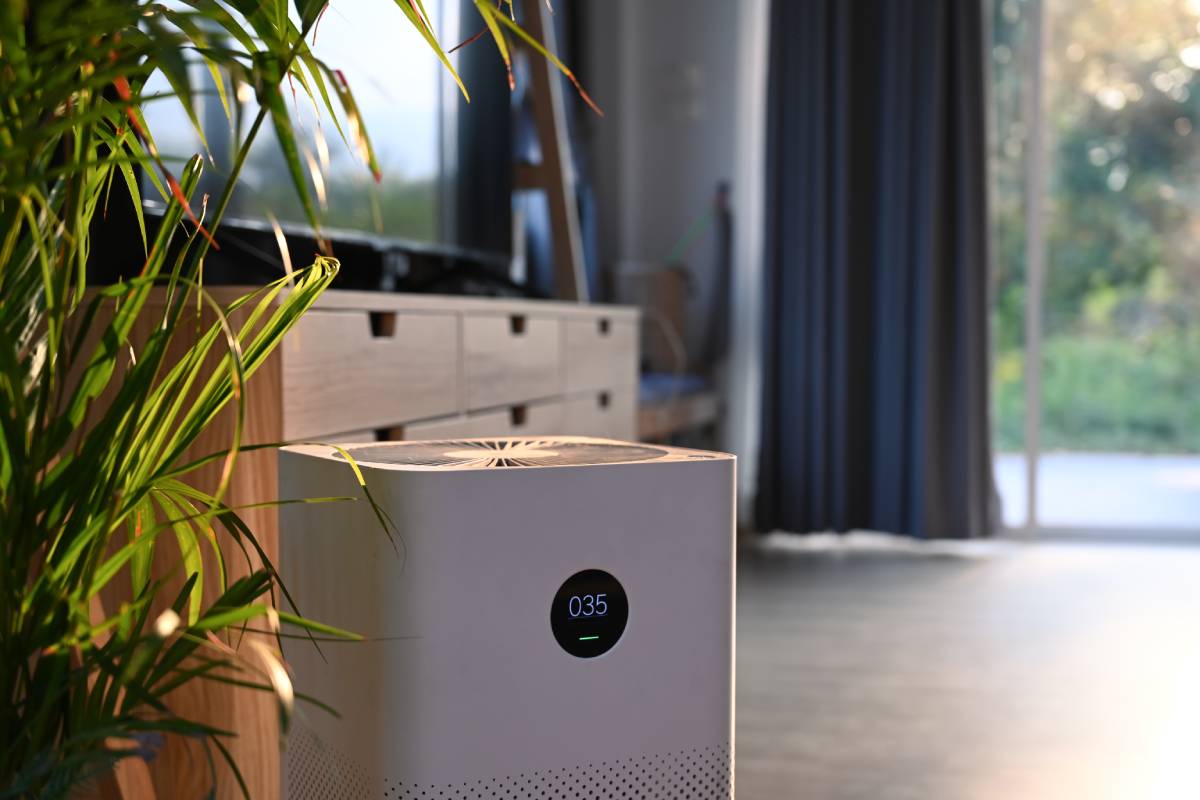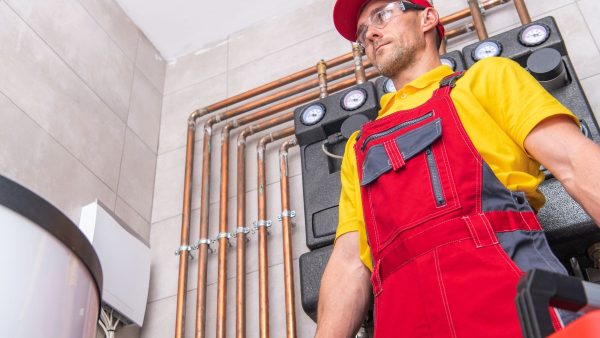Ever wondered about the best way to make the air inside your home cleaner and fresher?
It often comes down to a choice between having indoor plants that purify the air or getting a machine known as an air purifier. Each option has its own good points and things to consider.
In this discussion, we’ll explore the world of air quality improvement, comparing the natural appeal of air-purifying plants with the efficient technology of air purifiers. Whether you dream of a green oasis or a tech-savvy solution, let’s break down the pros and cons to help you decide what’s best for you.\
More to read: 5 Things to Carefully Consider Before You Hire an Arborist
Which indoor plant purifies the air the most?
In the hustle and bustle of modern life, creating a healthy and refreshing indoor environment is more crucial than ever. One simple yet effective way to enhance the air quality inside your home is by introducing air-purifying indoor plants. These green companions not only add a touch of nature to your living space but also work tirelessly to filter out common pollutants. Among the multitude of indoor plants available, some stand out as exceptional air purifiers.

- Spider Plant (Chlorophytum comosum): The Spider Plant takes the lead in the race for clean indoor air. Known for its resilience and easy care, this plant excels at removing formaldehyde—a common indoor pollutant present in materials like carpets and furniture. With its arching leaves and spiderettes dangling from long stems, the Spider Plant is a charming addition to any room.
- Peace Lily (Spathiphyllum): The Peace Lily is not just a visual delight; it’s also a powerful air purifier. This elegant plant is particularly effective at eliminating airborne mould spores. Its glossy green leaves and distinctive white blooms make it a popular choice for homes and offices alike. Additionally, Peace Lilies are low-maintenance and thrive in low-light conditions.
- Snake Plant (Sansevieria trifasciata): If you’re seeking a plant that requires minimal attention and boasts impressive air-purifying capabilities, the Snake Plant is your go-to. Also known as the Mother-in-law’s Tongue, it excels at removing formaldehyde and benzene from the air. With its upright, sword-shaped leaves, the Snake Plant adds a touch of sophistication to your indoor space.
- Devil’s Ivy (Epipremnum aureum): Devil’s Ivy, also known as Pothos or Golden Pothos, is a versatile plant that effortlessly enhances indoor air quality. It excels at removing pollutants like benzene, formaldehyde, and xylene. Its cascading vines and heart-shaped leaves make it a popular choice for hanging baskets, bringing a touch of nature to elevated spaces.
- Boston Fern (Nephrolepis exaltata): For those looking to combat indoor air pollution with a classic touch, the Boston Fern is an excellent choice. This feathery and lush plant is particularly effective at removing pollutants like formaldehyde and xylene. Its air-purifying prowess is complemented by its ability to add a refreshing and vibrant feel to any room.
When it comes to selecting indoor plants for cleaner air, these five options stand out as champions. Incorporating these green allies into your living space not only promotes a healthier atmosphere but also enhances the overall aesthetic appeal of your home.
Remember to place these plants strategically in different rooms to maximize their air-purifying benefits. With a little care and attention, you can breathe easy knowing that nature’s air purifiers are hard at work, creating a more enjoyable and healthier indoor environment for you and your loved ones.
How many plants do you need to purify a room?
In the quest for a cleaner and healthier indoor environment, many turn to the natural prowess of indoor plants. These green companions not only bring a touch of nature indoors but also have the ability to filter out common pollutants, creating a fresher atmosphere. However, the burning question remains: How many plants do you need to effectively purify a room?

The answer to this question depends on various factors, including the size of the room, the types of pollutants present, and the specific air-purifying capabilities of the chosen plants. While there is no one-size-fits-all solution, understanding some key principles can help you make informed decisions to optimize your indoor air quality.
- Plant-to-Person Ratio: One widely accepted guideline suggests having at least two medium-sized plants for every 100 square feet of indoor space. This ratio is a practical starting point recommended by NASA scientist, Bill Wolverton, especially for beginners looking to incorporate plants into their living spaces. It provides a balanced approach, considering both the air-purifying capacity of the plants and the size of the room.
- Plant Variety Matters: Different plants have varying capacities to filter specific pollutants. To maximize the effectiveness of your indoor garden, choose a variety of plants with complementary air-purifying abilities. For instance, Spider Plants are excellent at removing formaldehyde, while Snake Plants excel at eliminating benzene. Diversity in plant types ensures a more comprehensive approach to indoor air purification.
- Consider Plant Size: Larger plants generally have greater air-purifying capabilities due to their larger leaf surface area. If you have the space, incorporating a few larger plants, such as a Peace Lily or a Rubber Plant, can significantly contribute to improving air quality. However, smaller plants like the Spider Plant and Pothos are still valuable additions, especially in compact or limited spaces.
- Room Layout and Placement: Strategic placement of plants within a room can enhance their air-purifying impact. Consider placing plants near potential sources of pollutants, such as furniture, carpets, or electronics. Also, distribute plants evenly throughout the room to ensure comprehensive coverage. Avoid overcrowding, as this can impede air circulation and limit the effectiveness of individual plants.
- Personal Preferences and Sensitivities: Personal factors, such as individual sensitivities to air quality or the desire for a lusher indoor landscape, may influence the number of plants you choose to incorporate. Some people may find that they experience noticeable improvements in air quality and well-being with just a few carefully selected plants, while others prefer a more abundant display.
Should I have a bunch of air purifying plants or it’s better to buy an air purifier?
In the pursuit of cleaner indoor air, the choice between air-purifying plants and mechanical air purifiers can be a perplexing one. Both options come with their unique benefits, and the decision depends on various factors, including personal preferences, room size, and specific air quality needs. Let’s break down the pros and cons of each to help you make an informed choice for a fresher, healthier home environment.

Air-Purifying Plants
Pros:
- Natural Beauty and Aesthetics: One of the most appealing aspects of air-purifying plants is their natural beauty. They not only enhance indoor aesthetics but also bring a touch of nature into your living space. The variety of shapes, colours, and sizes allows you to create a personalized indoor garden that suits your style.
- Cost-Effective: Air-purifying plants are a cost-effective solution compared to mechanical air purifiers. Once purchased, they require minimal maintenance, involving basic care like watering and occasional pruning. This makes them an affordable long-term option for improving indoor air quality.
- Holistic Approach: Plants don’t just filter out pollutants; they also release oxygen and contribute to humidity regulation. This holistic approach to air quality can have positive effects on overall well-being, creating a more pleasant and comfortable indoor environment.
Cons:
- Variable Effectiveness: The effectiveness of air-purifying plants can vary depending on factors like plant type, size, and room conditions. Achieving optimal air purification may require a combination of different plants, and results may not be as instantaneous as with mechanical air purifiers.
- Limited Coverage Area: While plants can make a noticeable difference in smaller spaces, achieving comprehensive air purification in larger rooms may require a higher quantity of plants. This could impact the overall aesthetic balance and practicality of the space.
Mechanical Air Purifiers
Pros:
- Targeted and Efficient: Air purifiers are specifically designed to filter and capture pollutants, providing a more targeted and efficient approach to air purification. They can remove a wide range of contaminants, including dust, pollen, pet dander, and even volatile organic compounds (VOCs).
- Consistent Performance: Mechanical air purifiers deliver consistent and measurable results, making them a reliable option for those seeking immediate improvements in air quality. They are particularly effective in larger spaces and can operate continuously to maintain optimal air cleanliness.
- Customizable Features: Many air purifiers come with customizable features, such as adjustable fan speeds, different filtration options, and smart technology that allows you to monitor and control air quality. This flexibility allows you to tailor the purifier’s performance to your specific needs.
Cons:
- Initial and Operating Costs: Mechanical air purifiers typically involve upfront costs for the initial purchase, and some models may require ongoing expenses for filter replacements. While the investment can be worthwhile for those with specific air quality concerns, it’s essential to consider the long-term financial commitment.
- Lack of Natural Aesthetics: Unlike air-purifying plants, mechanical air purifiers lack the natural aesthetic appeal of living greenery. They may contribute to a clinical or technological ambience rather than enhancing the visual warmth of a space.
Conclusion
So, when it comes to having cleaner indoor air, the decision boils down to what suits you best. If you love the idea of having green plants around, adding to the beauty of your space while keeping the air fresh, then air-purifying plants might be your go-to choice.
However, if you’re all about practicality and want a machine that can quickly and efficiently clean the air, especially in larger areas, then an air purifier could be the way to go.
Finding a balance between the two, maybe having some plants alongside a purifier, can give you the best of both worlds. The key is to choose what makes sense for your lifestyle, creating a comfortable and inviting home with air that’s as fresh as can be.




